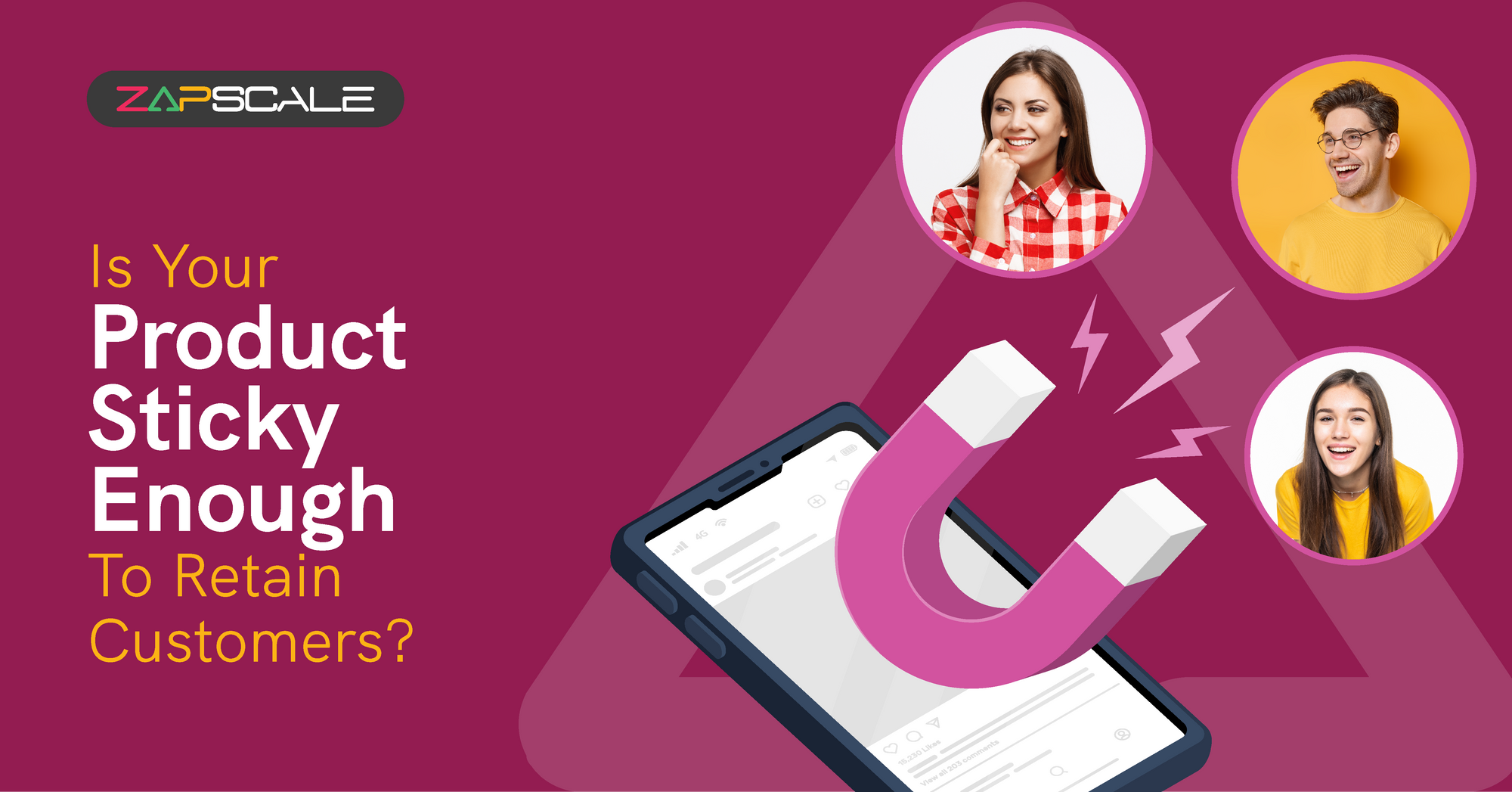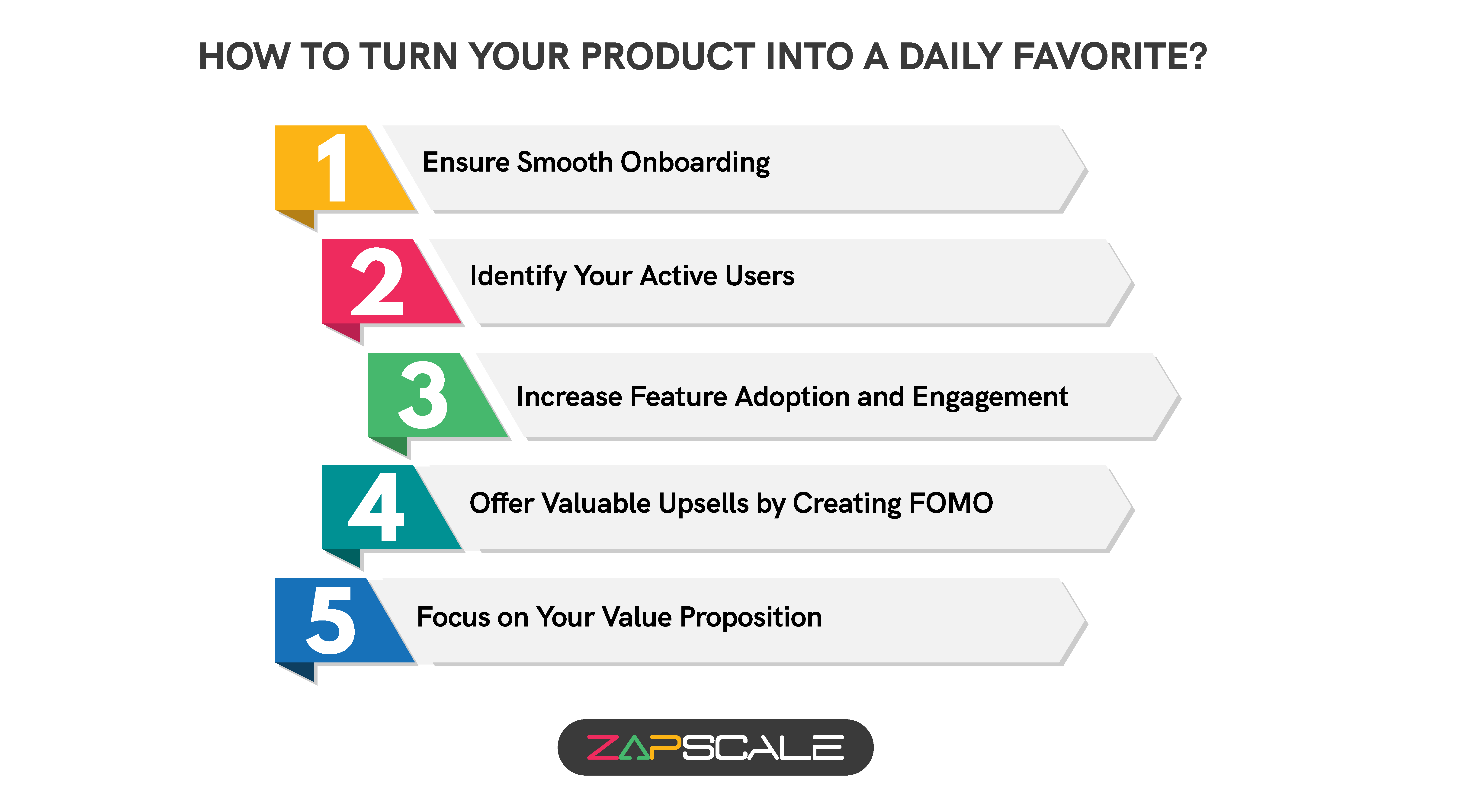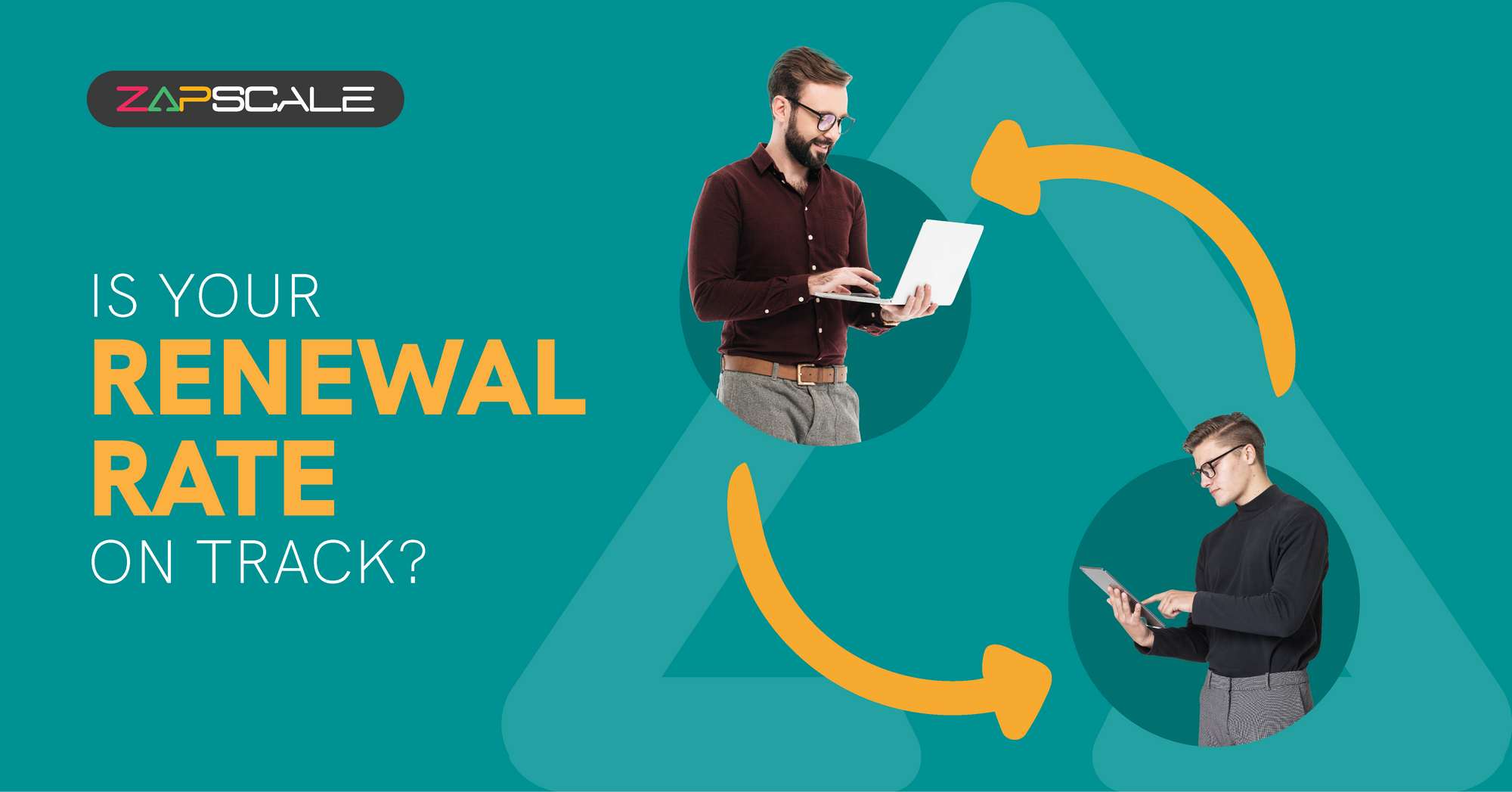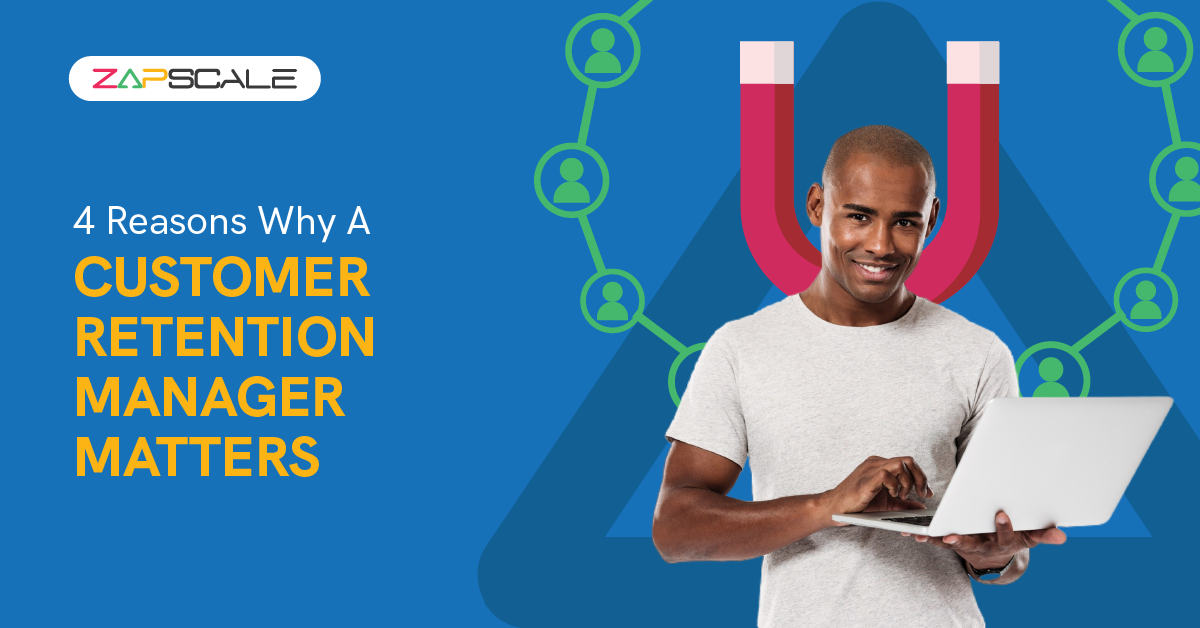CATEGORY > Customer Retention
Product Stickiness: The Building Block of SaaS Excellence

Introduction
For any SaaS company, the greatest wealth is its retained customers who are willing to use the brand’s products for an extended period. To ensure that this happens, product stickiness must be given due preference.
Product stickiness is all about customers engaging with your product and finding it valuable enough to keep coming back. Let’s learn more about this crucial SaaS concept by reading below.
What Does Product Stickiness Mean For Your SaaS?
In SaaS, product stickiness refers to how frequently people return to a product due to its value and engaging features. It is calculated using the DAU/MAU ratio, which indicates how many daily active users interact with the product compared to monthly users. A larger ratio indicates greater user involvement, indicating strong product attraction. Understanding customer demands, providing important features, and ensuring user satisfaction are all necessary for creating a sticky product. It increases customer loyalty, stimulates frequent use, and encourages renewals, resulting in a higher customer lifetime value.
Focusing on product stickiness leads to increased adoption, more feature utilization, and even higher net promoter scores. Sticky products can also foster brand advocacy, in which customers share their favorable experiences with others. This makes stickiness critical for customer retention and long-term success in a competitive SaaS industry.
Why Product Stickiness Is Essential For Your SaaS Survival?
Product stickiness is non-negotiable for the survival and success of your SaaS company as it impacts the following:
1. Customer Retention
Sticky products inherently have better retention rates. When a product is entertaining and valuable, people stick with it, reducing churn and assuring consistent revenue. This steadiness improves profitability and long-term sustainability.

2. Account Expansion
Satisfied users are more willing to invest in extras, allowing your SaaS company to grow naturally. A sticky product encourages customers to upgrade or purchase new features, which increases monthly recurring revenue.
3. Customer Lifetime Value
A product that keeps customers engaged raises their lifetime value, which is critical for profitability. Higher LTV enables more effective financial planning and decision-making.
As evident, sticky products increase brand loyalty and advocacy, resulting in reduced customer acquisition costs via word-of-mouth and referrals. They also provide valuable data-driven insights that help product teams improve user experiences and stay competitive. Focusing on product stickiness and retention provides low churn rates, resulting in long-term success and profitability in SaaS.
How To Quantify Your Product's Stickiness Rate?
It’s quite easy to measure the actual stickiness rate of your SaaS product. Here’s a simple formula to measure the same.
(DAU ÷ MAU) * 100
where,
DAU: Daily Active Users
MAU: Monthly Active Users
For example, if you have 5,000 DAUs and 10,000 MAUs, your stickiness rate is 50%, meaning that half of your monthly users interact every day. However, defining "active" and examining user behavior, such as casual vs. power users, yields more detailed results. To measure customer engagement with low-frequency tools, use weekly cycles that include DAU/MAU with session length, feature utilization, and NPS.
What's The Gold Standard For Product Stickiness?
In the SaaS business, average stickiness rates typically range from 13% to 20%, with 13% being the norm, corresponding to approximately four days of user engagement each month. However, the median stickiness rate is 9.3%, which corresponds to fewer than three days of use every month.
Rates above 20% are regarded as good, while rates above 25% are considered outstanding.
Product stickiness rates vary depending on product type, user demographics, and business strategies, such as freemium versus premium models. Low stickiness rates may not always signal bad performance. So, you must look out for other variables like user expectations and product usage to assess the legit stickiness rate.
The Secret Metrics That Drive Product Stickiness
As we know by now, Product stickiness helps us gauge product health effectively. It does this by telling us how frequently and deeply users engage with our product.
Even though Product stickiness tells the whole story, there are other metrics involved that help us understand our product’s stickiness better. Let’s take a look at those metrics below.
1. Open Rate
Determines the percentage of customers who set up and use your product within a specific time frame. A greater open rate indicates that people require your offerings more frequently. However, numerous notifications may increase the number of opens without resulting in meaningful engagement.
2. Lness
Represents how frequently users return over a certain time period. Higher Lness suggests a strong product stickiness.
Apart from these above-mentioned metrics, there are other metrics like user adoption, retention, NPS, revenue growth, and customer acquisition cost (CAC) to help SaaS companies evaluate their offering’s health.
How To Turn Your Product Into A Daily Favorite?
If you have a SaaS product then there’s no denying the fact that your biggest desire must be to find customers highly engaged with your offerings.
Here are ways you can make your SaaS product an integral part of your customer’s daily routine.

1. Ensure Smooth Onboarding
A smooth onboarding process is critical to user engagement and product retention.
According to studies, 63% of customers believe that onboarding quality influences their decision to continue using a product.
To improve onboarding, prioritize critical processes that assist users in getting started, such as guided tours and tutorials that explain key features. It's vital to demonstrate instant benefit by illustrating how the product solves difficulties. Offering support via chat or video training can help to reduce frustration and boost user confidence.
2. Identify Your Active Users
Understanding your most engaged users might help you enhance your marketing and product initiatives. Analyzing data reveals who uses your product the most, allowing for focused marketing to retain these committed customers.
For example, if major companies are your most engaged customers, direct resources toward them rather than less active groups. Knowing user demographics and behaviors can help you establish the perfect user profile, allowing you to attract and retain high-value customers.
3. Increase Feature Adoption And Engagement
Increasing feature adoption leads to sustained engagement. A solid onboarding experience is non-negotiable but you must emphasize primary benefits so that customers can quickly reach their "Aha!" moment. Users can discover new features through interactive walkthroughs and feature announcements. On the other hand, A/B testing different onboarding strategies aids in determining what increases acceptance and engagement rates.
4. Offer Valuable Upsells By Creating Fomo
Upselling can increase revenue and stickiness, but it should be done carefully. Introduce premium features at the right time, when people are active and willing to learn more. Use data to determine which features people haven't discovered but could benefit from, then use FOMO to promote upgrades without overwhelming them.
5. Focus On Your Value Proposition
A compelling value proposition is the foundation of product stickiness. Convey how your product addresses user pain points and provides tangible benefits. Gather feedback regularly through surveys and data analysis to ensure that your product remains relevant and helpful to its users. This strategy promotes long-term engagement and retention.
Conclusion
To put it in a nutshell, product stickiness is a vital part of SaaS success and sustainability. You can create a daily-use product by focusing on smooth onboarding, identifying active users, improving feature utilization, and promoting your value proposition. Further, prioritizing product stickiness results in increased loyalty and long-term revenue.
FAQs
1. How do you determine product stickiness?
Product stickiness is assessed by monitoring user engagement indicators such as the Daily Active customers (DAU) to Monthly Active Users (MAU) ratio, which reflects how frequently customers return to use the product.
2. How to boost product stickiness?
To enhance product stickiness, focus on providing a seamless onboarding experience, offering valuable features, personalizing user interactions, and continually demonstrating the value your product provides.
3. How is stickiness estimated?
Stickiness is calculated using the following formula: (DAU/MAU) * 100. This ratio shows you the percentage of monthly users who are active daily, demonstrating how frequently customers interact with your product.
4. What is a good benchmark for product stickiness?
A DAU/MAU ratio of 20-30% is a decent indicator of product stickiness. However, the ideal percentage varies depending on the type of product and sector.
ABOUT THE AUTHOR
Popular from Customer Retention
Quality Content,
Straight To Your Inbox!
Subscribe for the latest blogs, podcasts, webinars, and events!

Write a Blog
If you have experience in CS and
a flair for writing, we’d love to
feature you.
Write to us on
hello@zapscale.com




